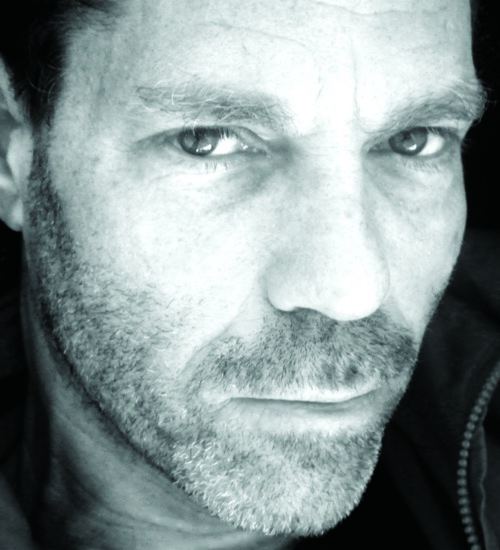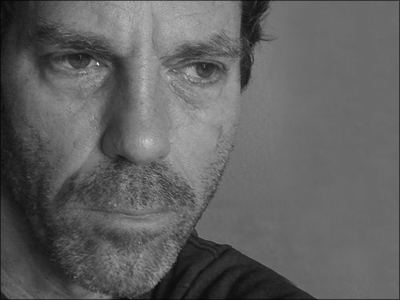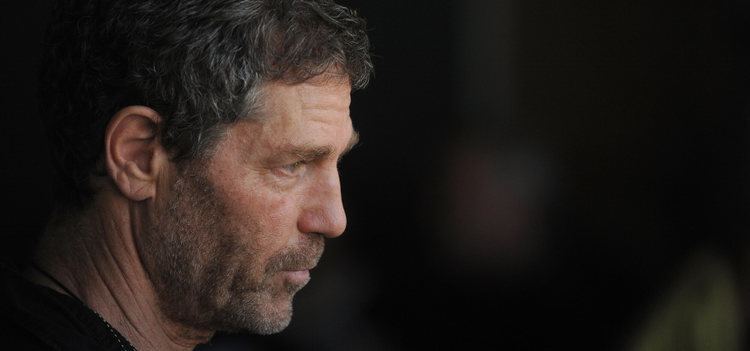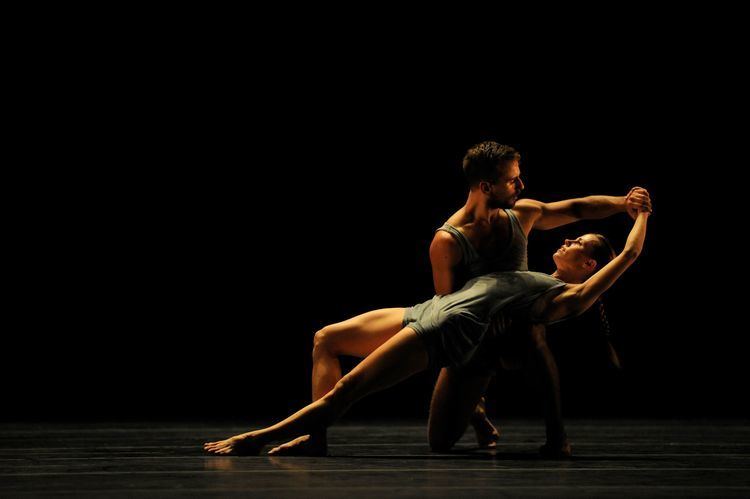Native name אוהד נהרין Partner(s) eri nakamura Title Artistic Director Spouse Mari Kajiwara (m. 1978) | Role Dancer Citizenship Israeli and american Name Ohad Naharin | |
 | ||
Awards EMET Prize in Culture and Arts Similar People George Balanchine, Jock Soto, Peter Martins, Darci Kistler | ||
Ohad naharin mark eliyahu sands
Ohad Naharin (born 1952) (Hebrew: אוהד נהרין) is an Israeli contemporary dancer, choreographer and dance company artistic director.
Contents
- Ohad naharin mark eliyahu sands
- Ohad naharin discusses gaga movement
- Biography
- Batsheva Dance Company
- Gaga
- Choreography
- Mr Gaga
- Awards
- References
Ohad naharin discusses gaga movement
Biography

Ohad Naharin was born in 1952 in Kibbutz Mizra. Raised in an artistic home, he wrote stories, composed music, and painted as a child. His father was a psychologist specializing in psychodrama and an actor who performed with Habima and the Haifa Theater. His mother was a Feldenkreis instructor, choreographer and dancer. Nevertheless, Naharin did not start dancing until age 22. During his first year with the Batsheva Dance Company, Martha Graham visited Israel and invited Naharin to join her dance company in New York. He attended Juilliard and the School of American Ballet.

In 1978, he married Mari Kajiwara, a native New Yorker and an Alvin Ailey dancer. In 2001, she died of cancer at age 50.

He is now married to Eri Nakamura, a Batsheva dancer with whom he has a daughter.
Batsheva Dance Company

In 1990, Naharin was appointed the artistic director of the Batsheva Dance Company, thereby launching the company into a new stage. The company is international in nature, made up of individually unique dancers from Israel and abroad. Dancers are encouraged to affirm their distinct creative gifts, as creators on their own.
Naharin’s signature style and technique has developed during his time with Batsheva. His style is “distinguished by stunningly flexible limbs and spines, deeply grounded movement, explosive bursts and a vitality that grabs a viewer by the collar.” His dancers do not rehearse in front of a mirror. This enables them to move away from self-critique and feel the movement from within. Naharin is known to be a reserved and private person, and this is apparent in the studio as well. He does not get angry or raise his voice, but comments constructively and calmly. Since he has also been musically trained, Naharin sometimes collaborates on the compositions used in his pieces.
Gaga
During his time directing and teaching the Batsheva Company, Naharin developed Gaga, a movement language and pedagogy that has defined the company's training and continues to characterize Israeli contemporary dance. A practice that resists codification and emphasizes the practitioner's somatic experience, Gaga is importantly labeled a movement language rather than a movement "technique". Many have noted that Gaga classes consist of a teacher leading dancers through an improvisational practice that is based around of a series of images described by the teacher. Naharin explains that such a practice is meant to provide a framework or a "safety net" for the dancers to use to "move beyond familiar limits".The descriptions that are used to guide the dancers through the improvisation are intended to help the dancer initiate and express movement in unique ways from parts of the body that tend to be ignored in other dance techniques. One example is the image of "Luna", which refers to the fleshy, semi-circular (like the moon, hence "luna") regions between fingers and toes. As part of the ideological insistence on moving through sensing and imagining, mirrors are discouraged in a Gaga rehearsal space.
Choreography
Naharin's works have been commissioned by the Frankfurt Ballet, Opéra National de Paris, Grand Théâtre de Genève, Sydney Dance Company, Lyon Opera Ballet, Les Grands Ballets Canadiens, Rambert Dance Company, Compañia Nacional de Danza, Cullberg Ballet, Finnish National Ballet, Ballet Gulbenkian, Balé da Cidade de São Paulo, Bavarian State Ballet, Cedar Lake Contemporary Ballet, Pittsburgh Ballet Theatre, Hubbard Street Dance Chicago and Royal Danish Ballet.
He seeks to create movement that is universal yet personal. He always has a clear social and political conscience in his works, but his dances are not meant to be political. He finds storytelling of suffering and the world’s problems boring in comparison to a person’s ability to use texture and multi-layered movement. He contrasts physical explosiveness with stillness, taking an interest in contrasts, edges, and extremes, which creates vital distance and space in dances. His philosophy, shared with many who devote their lives to choreography, is that everyone should dance. Deca Dance highlights many excerpts from his previous works. Naharin says himself, “Deca Dance is not a new work. It is more about reconstruction: I like to take pieces or sections of existing works and rework it, reorganize it and create the possibility to look at it from a new angle. It always teaches me something new about my work and composition. In Deca Dance I took sections from different works. It was like I was telling only either the beginning, middle or ending of many stories but when I organized it the result become as coherent as the original if not more.”
In Max, "Mr. Naharin’s theatrical ingredients are space, movement and light." A critic comments, "In this tremendously potent work, there are few obvious displays of emotion, yet Max is full of imagery that slips between real life and dance in fleeting flashes."
Anaphase, a work for 22 dancers and two musicians, combines elements of theater, opera, film and rock music as well as dance. According to Naharin, it "deals with small sculptures in a big space" and explores the abilities of the human body.
Other pieces he has choreographed include Three, Tabula Rasa, Mabul, Pas de Pepsi, Haru No Umi, In Common, Sixty a Minute, Black Milk, Innostress, Mamootot, moshe, yag, sabotage baby, perpetuum, Passo Mezzo, Kamuiot, plastelina, Naharin's Virus, Hora, Sadeh21, The Hole.
Mr. Gaga
In 2015, a documentary about Naharin called Mr. Gaga by Tomer Heymann premiered. This documentary's title is a reference to the movement language created by Naharin, Gaga. The documentary explores how Naharin and his movement style have influenced Batsheva Dance Company and the modern dance world. Gaga movement stems from Naharin's belief that "physical pleasure from physical activity is part of being alive," and the connection between effort and pleasure through movement. The documentary examines both Naharin's life and his choreographic work, explicating how his work has shaped the dance world.
